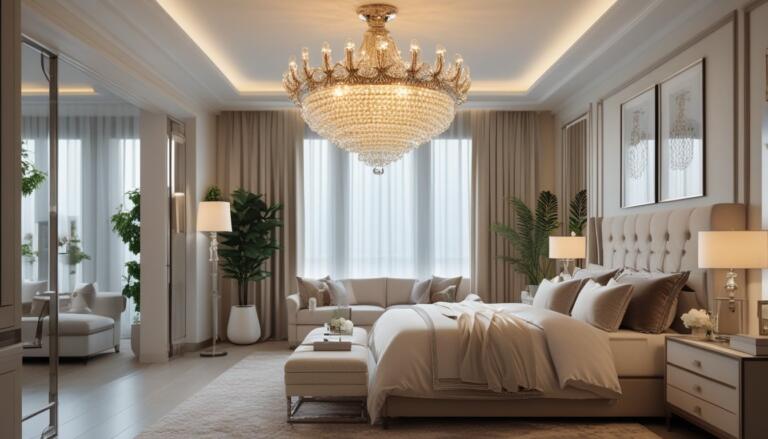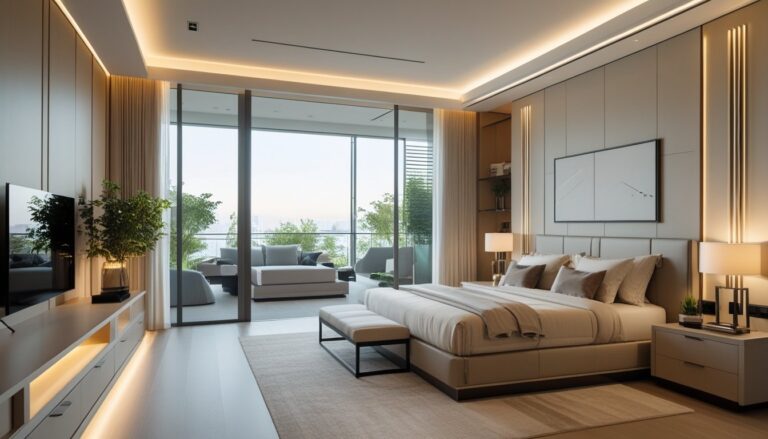7 Dining Room Rugs Style to Inspire Your Next Interior Design Project
Adding a rug to a dining room can change the feel and look of the space. Rugs help define the area, add warmth, and protect the floor. They also offer a way to bring color, pattern, or texture into the room.
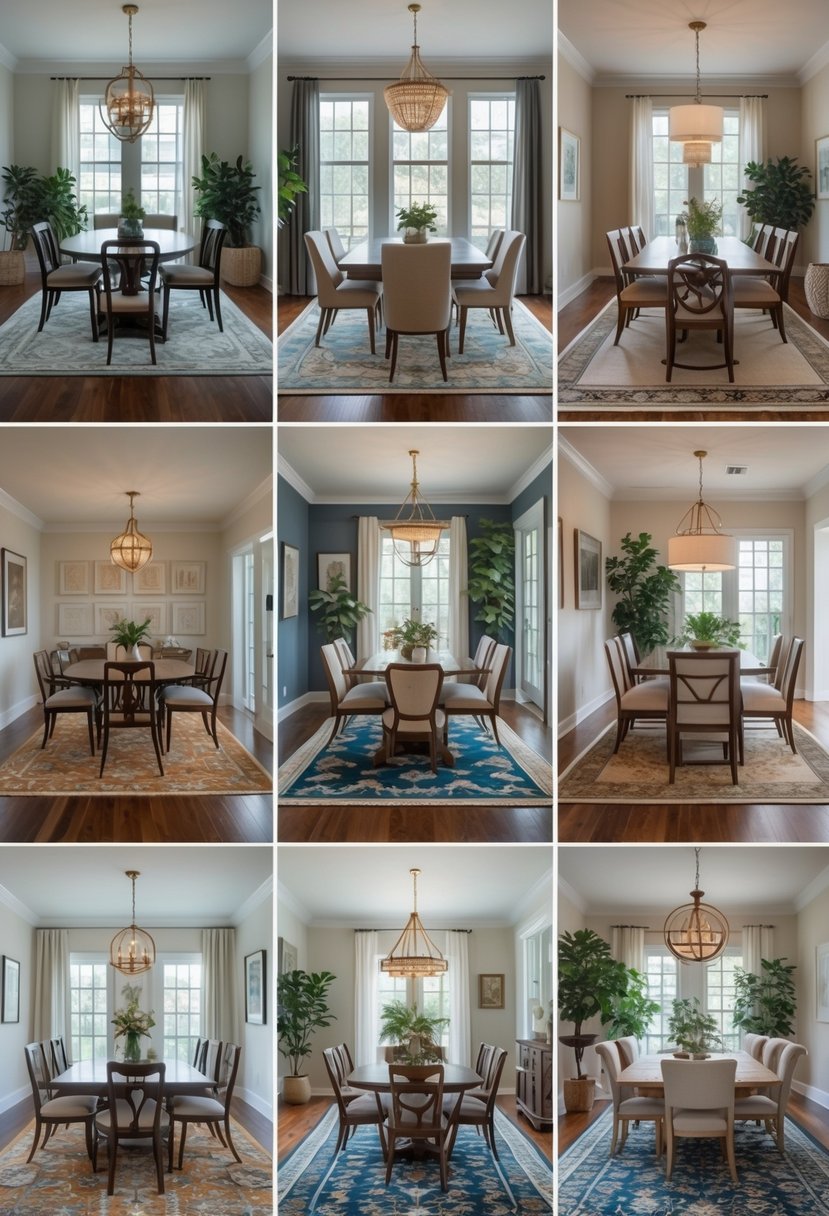
Choosing the right rug for a dining room enhances both style and function. It anchors the dining table and chairs while creating a cozy atmosphere for meals and gatherings. Different types and sizes of rugs work well depending on the room’s size and décor.
1) Layer a Persian rug under a rustic wooden dining table for warmth and texture
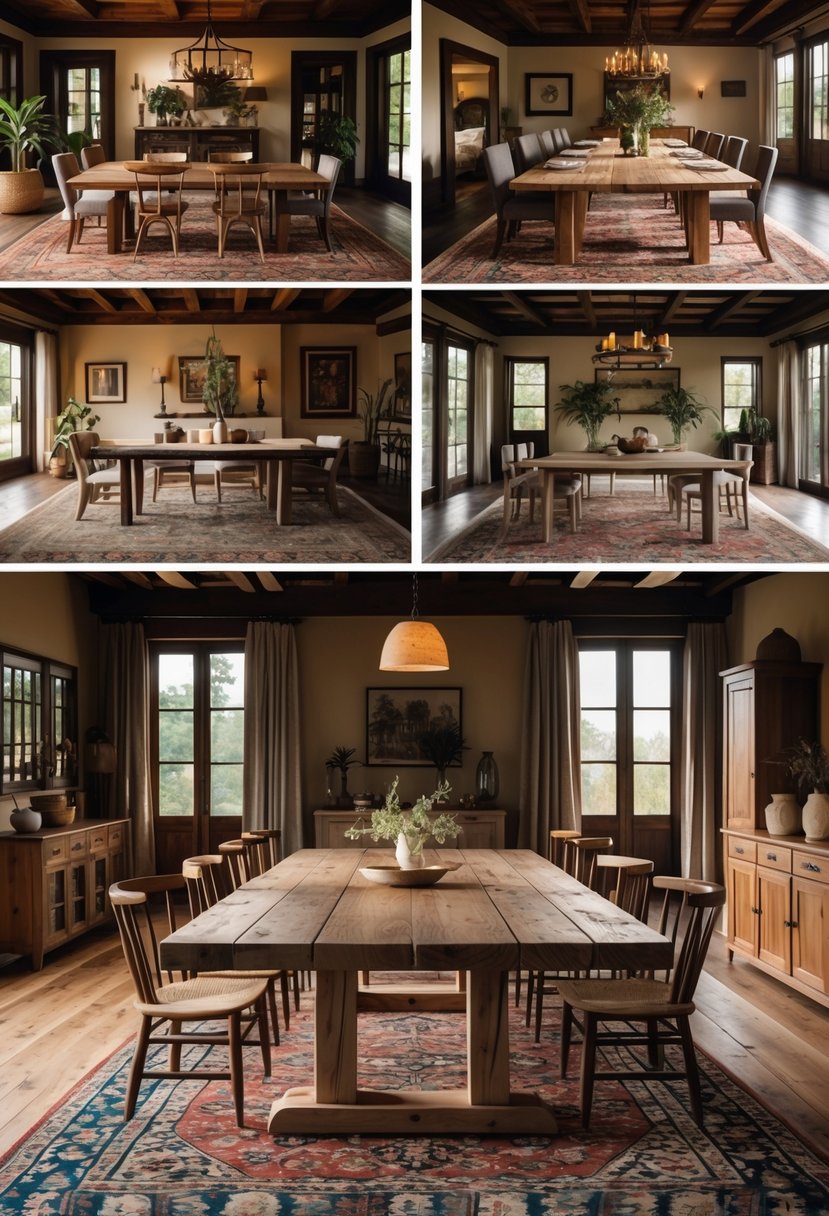
A Persian rug adds warmth and texture to a rustic wooden dining table. Its rich patterns contrast well with the natural wood, creating a balanced look. The rug also protects the floor from scratches and stains. This combination works well in both casual and formal dining spaces.
2) Use a large neutral jute rug to ground a modern minimalist dining room
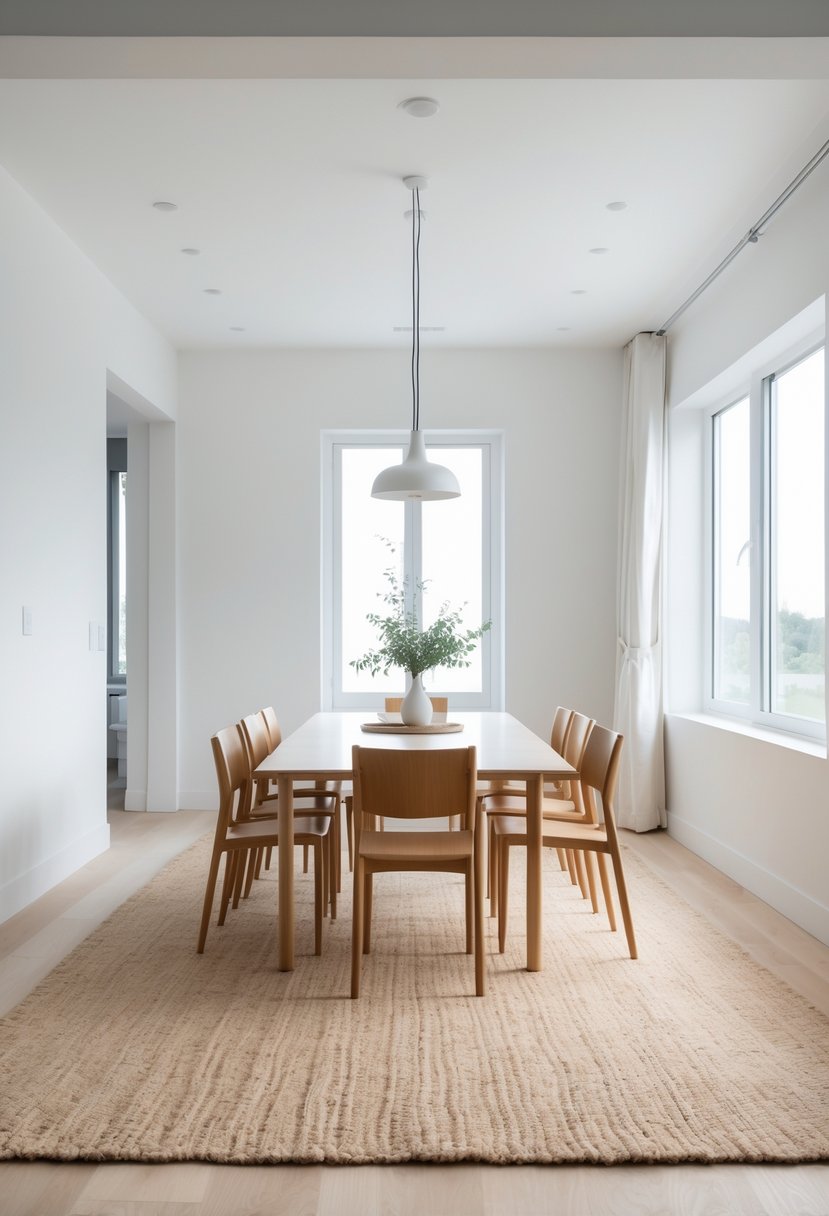
A large neutral jute rug adds a natural, simple foundation to a minimalist dining room. Its soft texture and earth tones create warmth without overwhelming the space. The rug complements clean lines and neutral furniture, helping the room feel balanced and inviting.
3) Bold black-and-white geometric rugs create contrast in light-toned dining spaces
Bold black-and-white geometric rugs add clear contrast to dining rooms with light furniture.
They bring character without making the space feel crowded.
The strong patterns help define the dining area and anchor the room’s style.
4) Soft, washable polypropylene rugs offer practicality in high-traffic dining areas
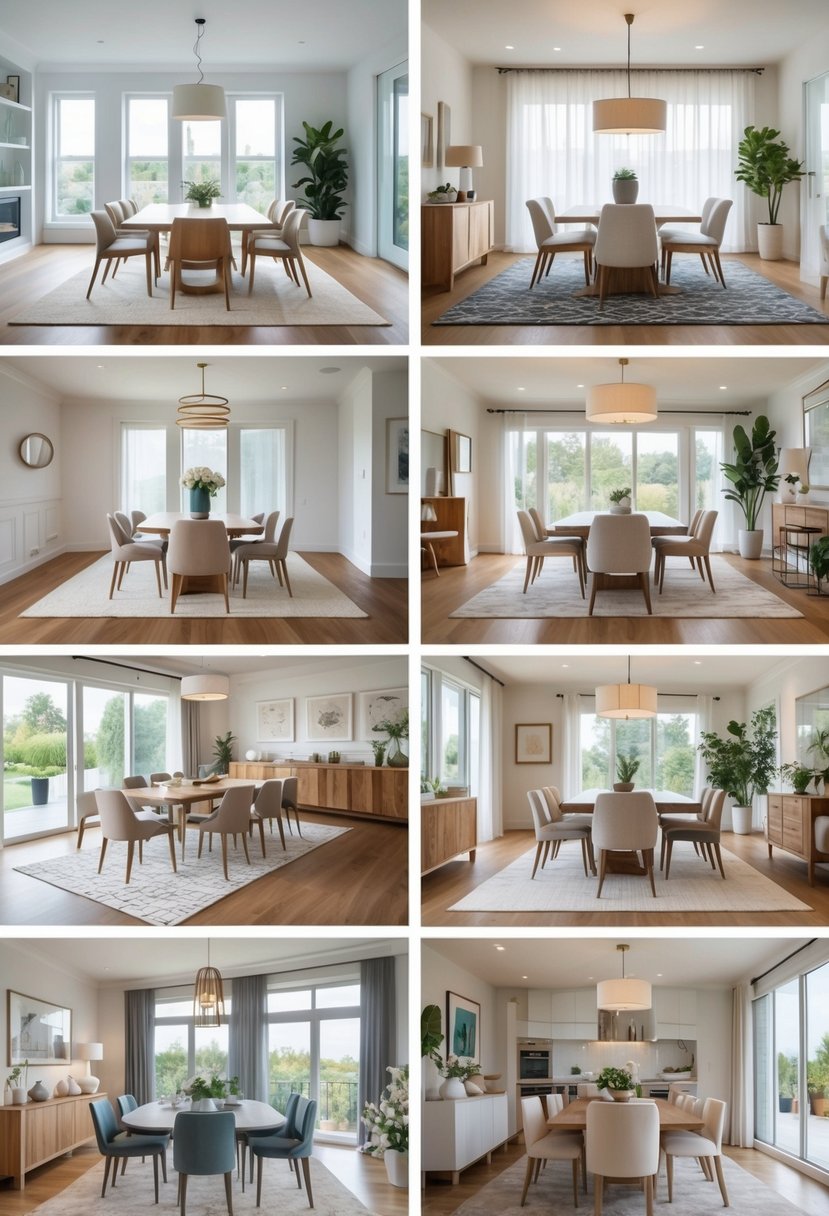
Polypropylene rugs are durable and easy to clean. They stand up well to spills and heavy foot traffic.
These rugs resist stains and dry quickly, making them good for busy dining rooms. Their soft texture adds comfort without needing much care.
5) Traditional oriental rugs introduce classic elegance and rich color
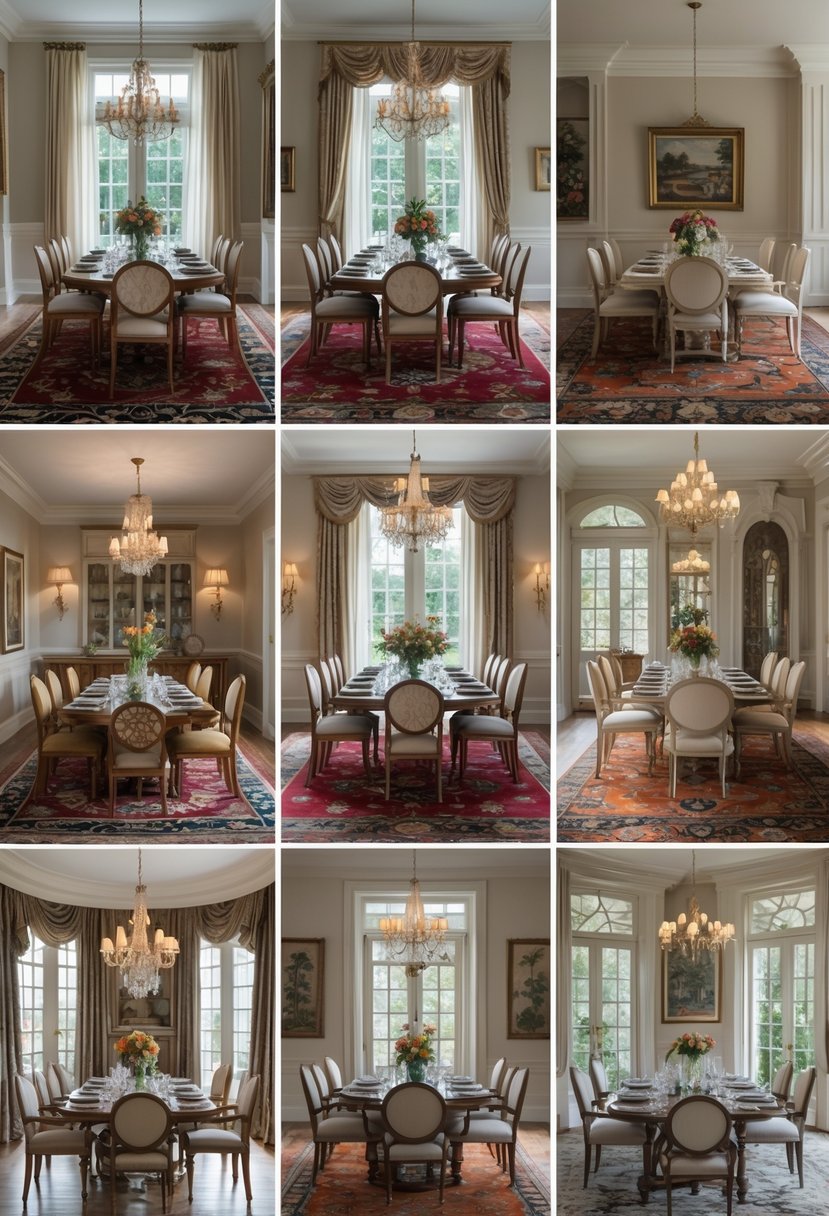
Traditional oriental rugs add a sense of history and style to dining rooms. Their intricate patterns and deep colors enhance classic decor.
They are often handwoven with fine materials. This craftsmanship gives rooms a polished and timeless look.
6) Natural fiber rugs like sisal add organic texture and durability

Natural fiber rugs such as sisal bring a natural, organic feel to dining rooms. They offer a durable surface that holds up well under foot traffic. The texture adds visual interest without overpowering the room’s design. These rugs work well in both modern and casual spaces.
7) Bright patterned kilim rugs invigorate bohemian-style dining rooms
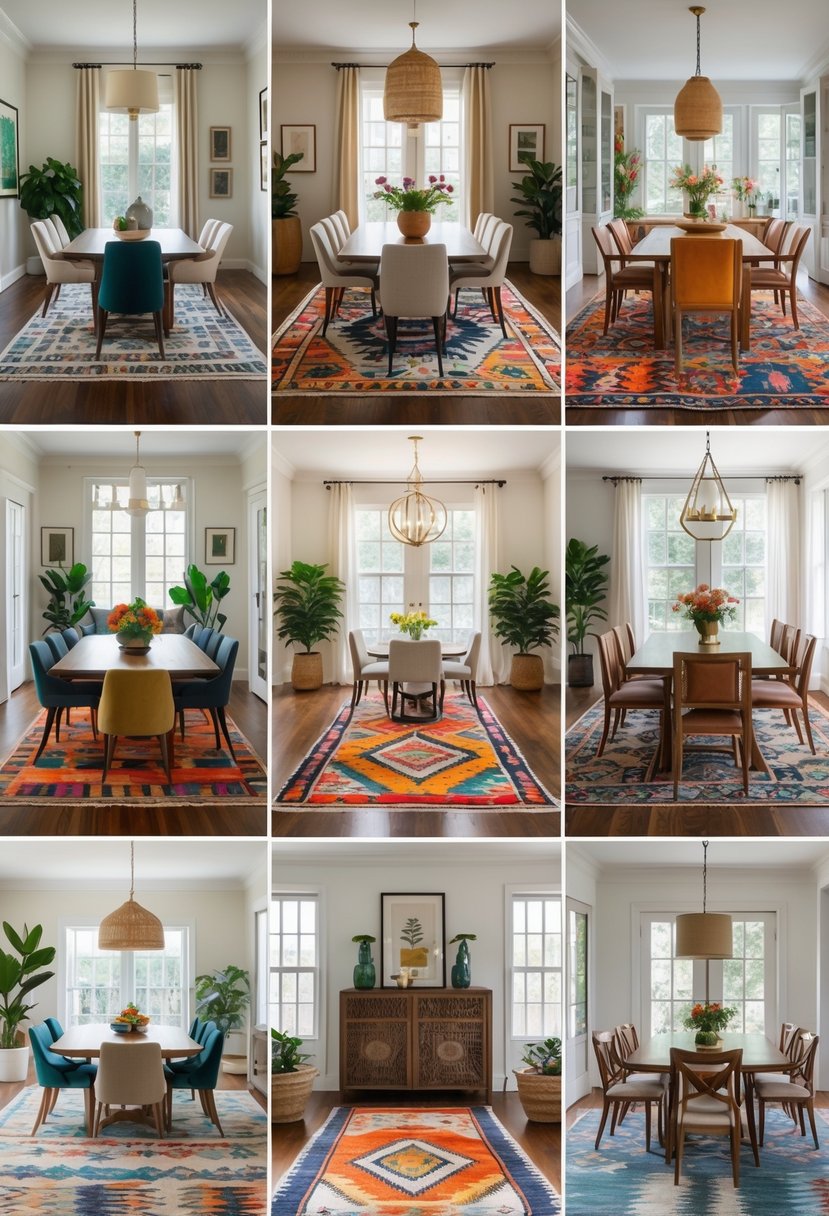
Kilim rugs add bold colors and patterns to bohemian dining rooms. Their flatwoven texture and tribal designs create a casual, artistic look.
These rugs bring warmth and energy without overwhelming the space. They fit well under tables, defining the dining area with style.
Benefits of Adding Rugs to Dining Rooms
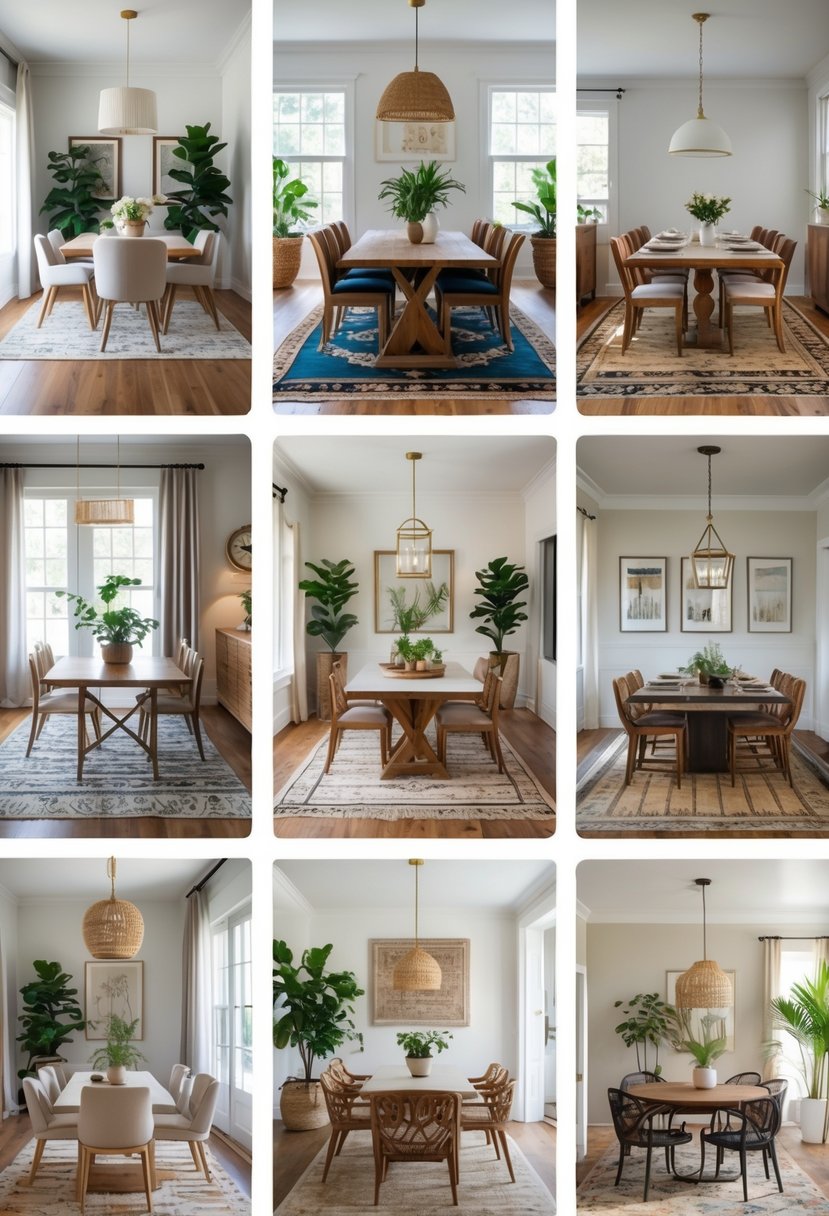
Rugs in dining rooms serve multiple purposes beyond decoration. They improve comfort, reduce noise, and help organize the space around the table. These benefits contribute to a more inviting and functional dining environment.
Visual Warmth and Texture
A rug adds color, pattern, and texture that can make the dining area feel warmer and more welcoming. It softens the hard surfaces of floors and furniture, creating a cozy atmosphere. The right rug can also tie together different design elements like chairs, tables, and lighting.
Choosing a rug with the right material and style enhances the overall look. For example, natural fibers like wool provide richness, while flatweave rugs offer a subtle texture. Size matters too; a rug should extend well beyond the table edges to keep the visual balance.
Noise Reduction
Dining rooms can often be noisy, especially in open-plan homes or spaces with hard floors and high ceilings. Rugs absorb sound from chairs moving and conversations, helping to lower echo and background noise.
This sound dampening creates a quieter, more comfortable space for meals. It also reduces distractions and makes conversations easier to hear. A thicker rug or one with a dense pile generally provides better noise control.
Defining the Dining Space
A rug clearly marks the dining area within larger rooms or open layouts. It acts like a border or frame under the table, separating the space visually from living rooms or kitchens. This makes the dining room feel like its own distinct zone.
Proper rug placement must allow room for chairs to move comfortably while staying on the rug. A general rule is to choose a rug at least 24 inches wider than the table on all sides. This balance ensures the space feels intentional and well organized.
How to Choose the Right Rug for Your Dining Room
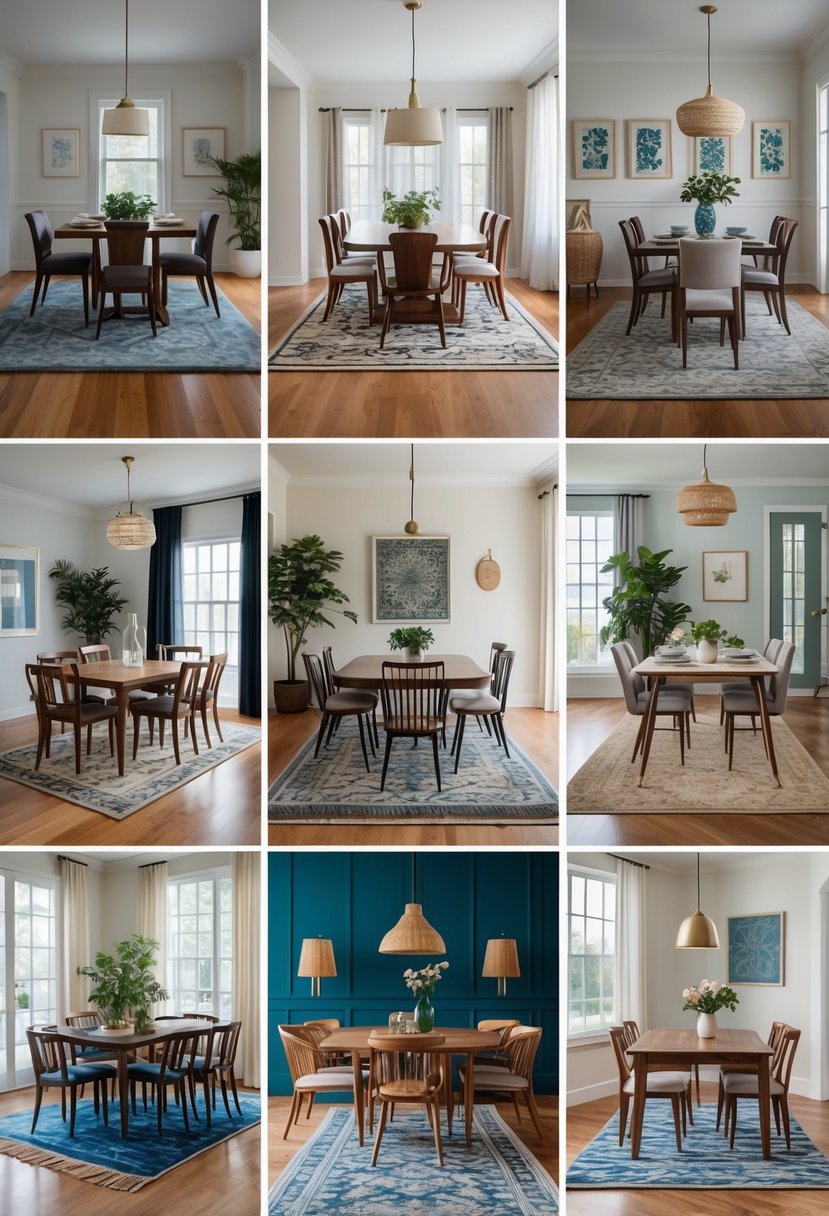
A dining room rug needs to fit the space well, resist stains, and match the style of the room. Size, material, color, and pattern all play important roles in making the rug a practical and attractive addition.
Selecting the Ideal Size and Shape
The rug should be large enough to hold the dining table and all the chairs, even when they are pulled out. It is best to add at least 24 inches around the table’s edges for chair movement.
Rectangular rugs suit most dining rooms, matching the table shape. Round tables work well with round rugs. The shape helps define the space and keeps a balanced look.
If the rug is too small, chairs may catch on the edges, creating inconvenience and wear. A rug that is too large can overwhelm the room. Measuring the dining area and furniture beforehand ensures a good fit.
Best Materials for Dining Areas
Durable and easy-to-clean materials are preferred for dining room rugs. Nylon and polypropylene are strong and resistant to stains. Wool is also a good choice because it is durable and can hide dirt.
Avoid delicate fabrics like silk or cotton that can stain easily or wear out fast. A flat-weave or low-pile rug is simpler to clean and better for handling spills.
If the material is not naturally stain-resistant, using a rug pad underneath can prevent sliding and add protection. Regular vacuuming and prompt cleaning will keep the rug looking good longer.
Color and Pattern Considerations
Darker colors or rugs with patterns help hide stains and spills. Busy designs or multicolored patterns work well in dining rooms because they mask dirt and wear.
Light-colored rugs can make a room feel larger but need more care. Matching the rug color to other elements in the room, like furniture or walls, creates harmony.
A rug’s pattern should not clash with other textiles or wallpaper. Simple patterns support a clean look, while bolder motifs add personality without overwhelming the space.
Frequently Asked Questions
Choosing the right rug size and style can make all the difference in a dining room. The ideal size ensures comfort and space for chairs, while the right style can enhance the room’s character and fit the existing decor.
How do I choose the right size rug for my dining room table?
The rug should be large enough to fit the dining table and all chairs, even when they are pulled out. Typically, add at least 24 inches beyond the table edges on all sides.
If the rug is too small, chairs might catch the edges, making it uncomfortable to move them. Measuring your dining area and table beforehand helps ensure a proper fit.
What are some stylish rug ideas for a dining room update?
A Persian rug adds warmth and texture under a rustic wooden table.
For a modern minimalist room, a large neutral jute rug can ground the space without overpowering it.
Bold black-and-white geometric rugs bring contrast to light-toned dining rooms.
Soft, washable polypropylene rugs work well for busy areas because they are easy to clean.
Traditional oriental rugs offer classic elegance and rich colors to enhance the dining room’s look.

